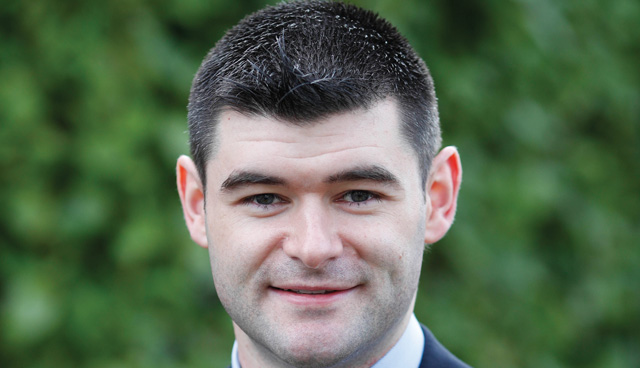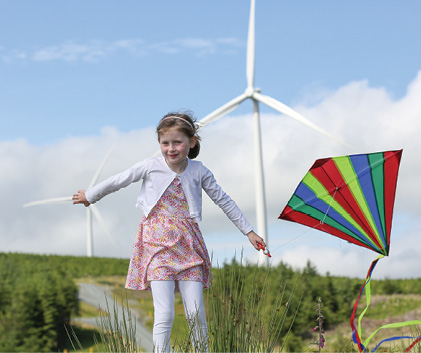Ireland’s green energy choice


Ireland faces a choice and Minister Denis Naughten TD will soon need to make a decision. David Connolly, CEO of Irish Wind Energy Association, writes.
Will we take up the challenge set down for us by the Taoiseach and the Citizens’ Assembly to become a leader in the fight against climate change?
Or will we miss another opportunity, condemning Ireland to a lost decade of failed energy policies and empty rhetoric?
In June, the European Union agreed to set a target that 32 per cent of the EU’s energy would come from renewables by 2030. To achieve this, each member state will have its own national target. These will vary as countries are at different stages in developing renewable energy and together they will each contribute to reaching the overall goal.
Ireland’s target will be negotiated with the EU in the coming months. We will agree a specific overall energy target that will be met across three energy categories – electricity, transport and heat.
A comprehensive report by leading energy and utilities experts Baringa, commissioned by IWEA, has shown how Ireland can use renewable energy to supply 70 per cent of our electricity needs by 2030. Because renewable transport and heat have been much slower to develop, a target for electricity of 70 per cent is essential if we are not to fall further and further behind our European neighbours.
It is already certain we will miss our 2020 renewable energy target. Our goal was for 16 per cent of our energy to come from renewables, which was our contribution to achieving an overall EU target of 20 per cent. Although the EU is likely to exceed this Ireland has lagged far behind.
To hit our target 40 per cent of our electricity should come from renewable sources along with 10 per cent of our transport and 12 per cent of our heat. Record-breaking growth in wind energy in recent years means that our electricity target could still be reached but we will fall well short in the other categories.
Be ambitious
Earlier this year we called on Minister Denis Naughten TD to be ambitious, to set out a 70 per cent target for renewable electricity for the year 2030.
The Baringa study shows not just that this is possible, but that it is likely to be cheaper for the consumer than continuing to reply on fossil fuels.
It will improve Ireland’s energy independence.
It will boost our economy.
It will create jobs.
This target is ambitious, but it is absolutely achievable.
There are already plans for thousands of MW of new wind and solar generation, and we have not even begun to exploit the potential of offshore wind. Work on developing the 700 MW Celtic Interconnector to France has started and there are reports planning permission has already been granted for around 350 MW of batteries with more applications on the way. But it will require a complete rethink in our energy system and a determined effort to electrify our transport and heating sectors with electric cars and heat pumps.
So, we know that providing 70 per of our electricity through renewables by 2030 is technically and economically possible, but is the political will there?
Political leadership
We need only look across the Irish Sea to Scotland to see what is possible with determined political leadership. In 2009, with cross-party support, the Scottish Government set a more ambitious target for the reduction of carbon emissions than the UK as a whole.
They aimed to reduce carbon emissions by 42 per cent by 2020 against the UK target of 32 per cent. This decision drove a decade of planning and energy policy, attracting billions in inward investment, as Scotland again and again exceeded their own targets. They hit their 2020 carbon emissions target in 2015. We will be lucky to hit ours by 2030.
They wanted 500 MW of community-owned energy generation by 2020. They had it by 2017 and have now upped their target for the end of the decade to 1,000 MW (1 GW). In just over 15 years, they have gone from getting 10 per cent of their electricity from renewables to 68 per cent last year and are on track to have a 100 per cent renewable electricity system by the 2020s.

But none of this could have been achieved without a government, and a wider political system, willing to embrace this vision.
Andy Kerr of the Edinburgh Centre of Carbon Innovation explains: “Political vision and leadership in putting forward a challenging target and corralling the resources and narrative around delivering that target, was as important for setting the framework for tackling climate change as robust evidence that it was achievable.”
The report published by Baringa provides the robust evidence that Ireland can achieve a target of 70 per cent by 2030. Wind is our cheapest source of renewable energy and last year provided more than a quarter of Ireland’s electricity. As other renewable energy sources become available the potential for a genuine green energy revolution is enormous.
But without the political vision, without leadership in politics, industry, business and wider society, without a target that will challenge us to achieve what we know we are capable of, we will see Ireland slip further and further behind.
We will lose out on the economic, environmental and social benefits of decarbonising our energy system, of powering our homes, schools and businesses with clean, Irish energy instead of imported fossil fuels.
That decision, that choice, is up to Minister Naughten.
Six steps to 70 per cent by 2030
1. Increase all-island wind power, including on and offshore, from approximately 5,000 MW in 2020 to 10,000 MW in 2030.
2. Develop at least 2,900 MW of solar power, including both small-scale installations on buildings and larger solar farms.
3. Strengthen our electricity transmission system so that it can accommodate up to 90 per cent renewable energy at any one time.
4. Electrify our heating and transport systems using heat pumps and electric vehicles.
5. Build an additional 1,450 MW of interconnection from Ireland to Britain and France.
6. Construct 1,700 MW of new batteries.
For more information: David Connolly is CEO of the Irish Wind Energy Association W: iwea.com






